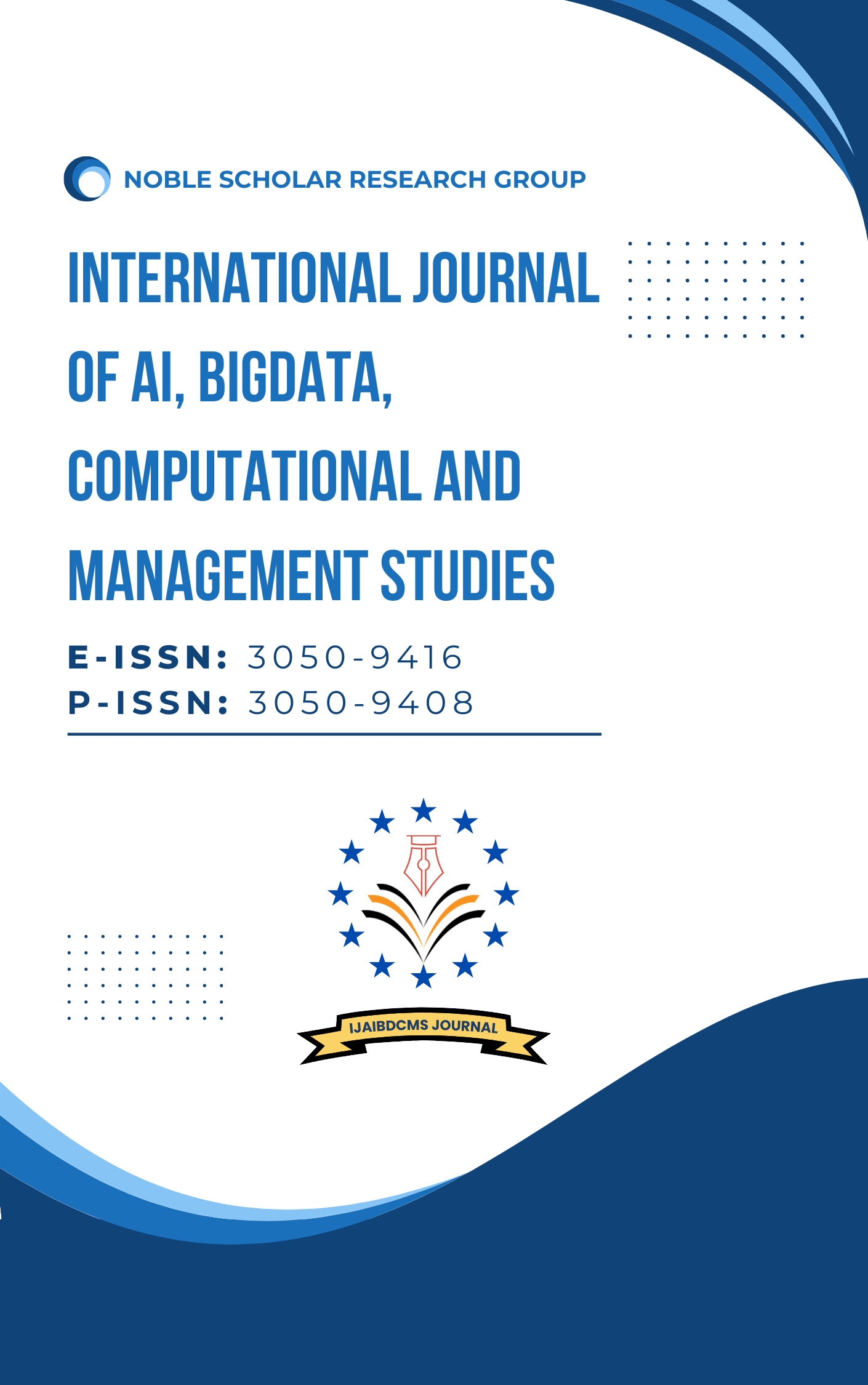Event-Driven Data Engineering in Microservices Architectures
DOI:
https://doi.org/10.63282/3050-9416.IJAIBDCMS-V3I3P103Keywords:
Event-Driven Architecture, Microservices, Real-Time Data Processing, Asynchronous Communication, Event Producers, Event Consumers, Data Consistency, ScalabilityAbstract
Event-driven data engineering in microservices architectures represents a transformative approach to building responsive and scalable systems. This architecture leverages events changes in state or updates to enable asynchronous communication between decoupled services. By implementing an event-driven architecture (EDA), organizations can achieve real-time data processing, enhancing their ability to react to changes as they occur. For instance, in a retail environment, an event-driven system can instantly update inventory levels and adjust marketing strategies based on sales transactions, fostering agility and responsiveness. The core components of EDA include event producers, which generate events; event routers, responsible for distributing these events; and event consumers, which process the events and execute necessary actions. This decoupling allows for independent scaling and deployment of services, significantly improving system reliability and reducing latency. However, challenges such as ensuring data consistency and managing event duplication must be addressed. Solutions like event sourcing and Command Query Responsibility Segregation (CQRS) can help maintain consistency across services. As organizations increasingly seek real-time insights, adopting event-driven architectures is becoming essential for enhancing business capabilities, enabling rapid decision-making, and fostering innovation in a data-centric world
References
1. DS Stream. (n.d.). Microservices in data engineering: How to break a monolith into smaller parts. Retrieved from https://dsstream.com/microservices-in-data-engineering-how-to-break-a-monolith-into-smaller-parts/
2. Red Hat Developers. (n.d.). Event-driven architecture overview. Retrieved from https://developers.redhat.com/topics/event-driven
3. Microservices.io. (n.d.). Event-driven architecture patterns. Retrieved from https://microservices.io/patterns/data/eventdriven-architecture.html
4. XenonStack. (n.d.). Event-driven architecture in microservices. Retrieved from https://www.xenonstack.com/blog/eventdriven-architecture
5. Volt Active Data. (2022). What is event-driven microservices architecture? Retrieved from https://www.voltactivedata.com/blog/2022/10/what-is-event-driven-microservices-architecture/
6. Kashyap, V. (n.d.). Microservices architecture: Event-driven data handling. LinkedIn. Retrieved from https://www.linkedin.com/pulse/microservices-architecture-event-driven-data-vaibhav-kashyap
7. Akamai. (n.d.). What is an event-driven microservices architecture? Retrieved from https://www.akamai.com/blog/edge/what-is-an-event-driven-microservices-architecture
8. AWS. (n.d.). Event-driven architecture on AWS. Retrieved from https://aws.amazon.com/event-driven-architecture/
9. ScyllaDB. (n.d.). Event-driven architecture fundamentals. Retrieved from https://www.scylladb.com/glossary/eventdriven-architecture/
10. Solace. (n.d.). What is event-driven architecture? Retrieved from https://solace.com/what-is-event-driven-architecture/
11. Birlasoft. (n.d.). Embracing event-driven architecture: Core principles, patterns, and best practices. Retrieved from
12. Confluent. (n.d.). Understanding event-driven architecture. Retrieved from https://www.confluent.io/learn/event-drivenarchitecture/
13. Orkes. (n.d.). Change data capture (CDC) in event-driven microservices. Retrieved from https://orkes.io/blog/change-datacapture-cdc-in-event-driven-microservices/
14. Debezium. (2020). Event sourcing vs. change data capture (CDC). Retrieved from https://debezium.io/blog/2020/02/10/event-sourcing-vs-cdc/
15. Hevo Data. (n.d.). Kafka, Debezium, and event sourcing setup. Retrieved from https://hevodata.com/learn/kafkadebezium-event-sourcing-setup/
16. InfoQ. (n.d.). CDC and microservices: Challenges and solutions. Retrieved from https://www.infoq.com/presentations/cdcmicroservices/
17. Daily.dev. (n.d.). 10 methods to ensure data consistency in microservices. Retrieved from https://daily.dev/blog/10-methods-to-ensure-data-consistency-in-microservices
18. SayOne Tech. (n.d.). Managing data consistency in microservice architecture. Retrieved from https://www.sayonetech.com/blog/managing-data-consistency-microservice-architecture/
19. GeeksforGeeks. (n.d.). Event-driven APIs in microservice architectures. Retrieved from https://www.geeksforgeeks.org/event-driven-apis-in-microservice-architectures/
20. Confluent. (n.d.). Schema evolution in microservices. Retrieved from https://docs.confluent.io/platform/current/schemaregistry/fundamentals/schema-evolution.html
21. Akamai. (n.d.). Event-driven data management in microservices. Retrieved from https://www.akamai.com/blog/edge/whatis-an-event-driven-microservices-architecture
22. DZone. (n.d.). Event-driven microservices explained. Retrieved from https://dzone.com/articles/event-drivenmicroservices-1
23. Nexocode. (n.d.). Event-driven architecture in logistics: A case study. Retrieved from https://nexocode.com/blog/posts/event-driven-architecture-in-logistics-case-study/
24. xCubelabs. (n.d.). The future of microservices architecture and emerging trends. Retrieved from https://www.xcubelabs.com/blog/the-future-of-microservices-architecture-and-emerging-trends/
25. Charter Global. (n.d.). Microservices trends and future directions. Retrieved from https://www.charterglobal.com/microservices-trends/
26. Blazeclan. (n.d.). The trend of event-driven microservices architecture. Retrieved from https://blazeclan.com/india/blog/the-trend-of-event-driven-microservices-architecture/



